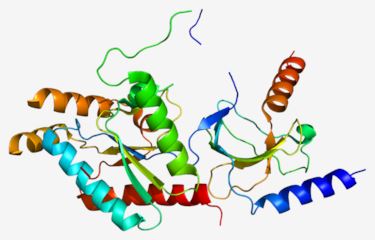Introduction of CACNB2
CACNB2, known as voltage-dependent L-type calcium channel subunit beta-2, is encoded by CACNB2 gene. It belongs to the calcium channel beta subunit family which has been deeply studied during the past few decades because it offers numerous possibilities for therapeutic applications. Recent studies show that mutations in the CACNB2 gene are associated with Brugada syndrome, autism, attention deficit-hyperactivity disorder (ADHD), bipolar disorder, major depressive disorder, and schizophrenia.
| Basic Information of CACNB2 | |
| Protein Name | Voltage-dependent L-type calcium channel subunit beta-2 |
| Gene Name | CACNB2 |
| Aliases | CACNLB2, MYSB |
| Organism | Homo sapiens (Human) |
| UniProt ID | Q08289 |
| Transmembrane Times | Peripheral membrane protein |
| Length (aa) | 660 |
| Sequence | MVQRDMSKSPPTAAAAVAQEIQMELLENVAPAGALGAAAQSYGKGARRKNRFKGSDGSTSSDTTSNSFVRQGSADSYTSRPSDSDVSLEEDREAVRREAERQAQAQLEKAKTKPVAFAVRTNVSYSAAHEDDVPVPGMAISFEAKDFLHVKEKFNNDWWIGRLVKEGCEIGFIPSPVKLENMRLQHEQRAKQGKFYSSKSGGNSSSSLGDIVPSSRKSTPPSSAIDIDATGLDAEENDIPANHRSPKPSANSVTSPHSKEKRMPFFKKTEHTPPYDVVPSMRPVVLVGPSLKGYEVTDMMQKALFDFLKHRFEGRISITRVTADISLAKRSVLNNPSKHAIIERSNTRSSLAEVQSEIERIFELARTLQLVVLDADTINHPAQLSKTSLAPIIVYVKISSPKVLQRLIKSRGKSQAKHLNVQMVAADKLAQCPPELFDVILDENQLEDACEHLADYLEAYWKATHPPSSSLPNPLLSRTLATSSLPLSPTLASNSQGSQGDQRTDRSAPIRSASQAEEEPSVEPVKKSQHRSSSSAPHHNHRSGTSRGLSRQETFDSETQESRDSAYVEPKEDYSHDHVDHYASHRDHNHRDETHGSSDHRHRESRHRSRDVDREQDHNECNKQRSRHKSKDRYCEKDGEVISKKRNEAGEWNRDVYIRQ |
Function of CACNB2 Membrane Protein
CACNB2, also termed as the voltage-gated Cav1.2 calcium channel, can respond to membrane depolarization by increasing the membrane permeability to Ca2+, a major signal for cardiac muscle contraction, regulation of vascular tone and CREB-dependent transcriptional activation. CACNB2 is one of the four homologous genes coding for the auxiliary Cavβ subunits, which are important modulators of the Ca2+ channel activity. Studies conducted on CACNB2 suggest it can be a potential biomarker for various diseases and provide new ideas for clinical therapy. It is documented that CACNB2 is associated with Short QT syndrome (SQTS) and CACNB2 missense mutations have been identified in autism spectrum disorder (ASD) patients.
 Fig.1 Structure of CACNB2 membrane protein.
Fig.1 Structure of CACNB2 membrane protein.
Application of CACNB2 Membrane Protein in Literature
This article reports that the expression levels of KCNH2, KCNQ1, KCNJ2, CACNA1C, and CACNB2 are associated with Short QT syndrome (SQTS). Authors summarize the latest literature on SQTS and ERS, and illustrate the key steps that first lead to the identification of the syndrome, including the epidemiology, genetics, diagnosis, clinical manifestations, and management.
This article conducts genome-wide association studies and analyzes candidate gene studies which are associated with cardiovascular diseases, metabolic diseases, and mood disorders. These results reveal that the shared biological mechanisms of mood disorders and cardiometabolic diseases.
Authors in this group reveal the function of Cavβ2-specific molecular in various diseases. The results indicate it could be an emerging pharmacological target for hypertension, heart failure, arrhythmia, and mental disorders.
This article focuses on three rare CACNB2 missense mutations identified in ASD patients. The data suggest the mutations be of physiological relevance since they modulate whole-cell Ca2+ currents through calcium channels when expressed in a recombinant system (HEK-293 cells).
This article evaluates the expression level of ITIH3, AS3MT, CACNA1C and CACNB2 genes, and these results show that rare mutations of these genes play an important role in providing important new insights into the genetics and diagnosis of neurodevelopmental disorder (NDD).
CACNB2 Preparation Options
To obtain the soluble and functional target protein, the versatile Magic™ membrane protein production platform in Creative Biolabs enables many flexible options, from which you can always find a better match for your particular project. Aided by our versatile Magic™ anti-membrane protein antibody discovery platform, we also provide customized anti-CACNB2 antibody development services.
As a forward-looking research institute as well as a leading custom service provider in the field of membrane protein, Creative Biolabs has won good reputation among our worldwide customers for successfully accomplishing numerous challenging projects including generation of many functional membrane proteins. Please feel free to contact us for more information.
All listed services and products are For Research Use Only. Do Not use in any diagnostic or therapeutic applications.